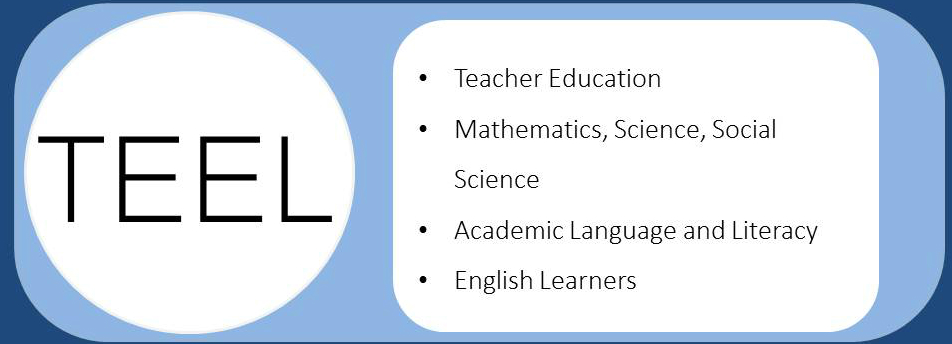The TEEL projects use a practice-based model of teacher education based on research demonstrating that the development of expertise in novice teachers is facilitated by engaging them in observation, analysis, and experience with explicit models of the instructional approaches they are being prepared to teach (Abells & Cennamo 2004; Feiman-Nemser, 2008: Goldman, Pea, Barron & Derry 2007; Hewson & Hewson, 1988; Roth, Garnier, Chen, Lemmens, Schwille, & Wickler 2011; Schwartz & Hartman 2007; Sherin 2004; Thompson, Windschitl & Braaten, 2013; Wilson, Floden, & Ferrini-Mundy, 2008) and providing them with opportunities to practice instructional approaches with the student population they are being prepared to teach with intensive feedback, coaching, and support (Joyce & Showers, 1995; Loucks-Horsley et al., 1998; Speck & Knipe, 2001). This requires restructuring the pedagogical model of teacher education coursework (Stoddart et al, in press; Villegas and Lucas, 2002) and establishing coherence between the different components of the teacher education program – coursework, practicum, and supervision (Stoddart, 1993b; Wilson, Floden & Ferrini-Mundy, 2001). Therefore, the primary goals of the TEEL experimental teacher education program are to (a): develop conceptual and practical coherence across pre-service teacher education programs by articulating the TEEL integrated instructional model throughout the coursework and field practicum and (b) provide explicit models of integrated practice in subject areas to guide novices’ use of effective practices for ELLs. In the TEEL projects (ESTELL, ELLISA, and SSTELLA), each experimental university teacher education program spends a year restructuring all components of their pre-service programs to incorporate TEEL principles and materials. To develop program coherence, all the teacher education program staff – the university faculty who teach the theory and methods courses, the teacher supervisors who provide guidance and feedback to student teachers in field practicum and cooperating teachers who mentor student teachers in their classroom placements – receive extensive professional development in the TEEL model. They then spend six months collaborating on the integration the TEEL principles into their courses and student teacher supervision practices with the support of the TEEL research and project staff. The TEEL teacher education materials provide explicit exemplars of integrated pedagogy through instructional vignettes, integrated instructional units, video cases, and coaching rubrics.
